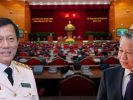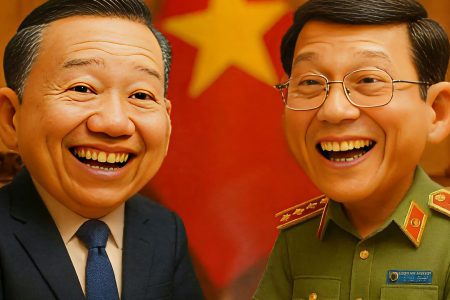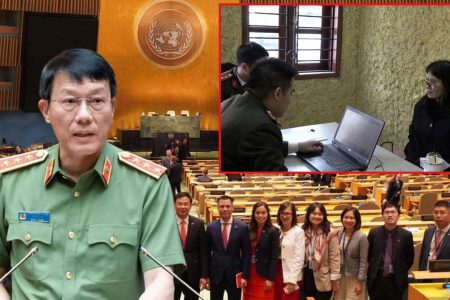China’s state-controlled CGTN News on April 18 announced: „the establishment of two important administrative units, historical, Nansha district (ie the Truong Sa or the Spratlys of Vietnam) and Xisha district (ie the Hoang Sa or the Paracels of Vietnam) is approved by the State Council of the Chinese Government.“ These two districts belong to Sansha City, south of Hainan Island. Researchers assess that the establishment of these two new districts of China is not merely symbolic.
According to the Asia Maritime Transparency Initiative (AMTI) of the Center for Strategic Research (CSIS) on May 12, this move will improve administrative management and promote China’s key policies on the East Sea (South China Sea).
The so-called Sansha City was created by Beijing in July 2012, belonging to Hainan province. The “authority” of this “city” is thought to spread over 280 islands, shoals, reefs and other entities, along with surrounding waters, totaling nearly 800,000 square miles of sea and land.
The area encompasses much of China’s claim within the framework of nine self-drawn lines, including the Paracels and the Spratlys, along with Macclesfield and Scarborough Shoal.
In the past eight years, China has opened a school, attracted a lot of investment, built new infrastructures such as wharves and seawater refineries. Tourism flourished, economic diversification, logistics and telecommunications developed, and many solid houses were erected and encouraged to settle.
Phu Lam Island of the Paracels and other entities believed to be under the jurisdiction of Sansha City” where weapons systems are located, and the bodies of this “town-level” coordinate in the distribution of development and operation of the Chinese maritime militia. And now on the diverse entities of “Sansha City” filled with modern intelligence and surveillance equipment systems.
In the Fiery Cross Reef, in recent years, Beijing has reclaimed this place along with some other rocks and small islands in the South China Sea into artificial islands, which are thought by other countries to turn these places into a strategic military outpost at sea.
On the Fiery Cross Reef of the Spratlys, China has built buildings, training ground, radar equipment, even the location of missiles, runways, aircraft landing zones, large warehouses, and a variety of equipment serving the detection and satellite tracking military activities and communications of other countries.
Recently, in late March, Beijing announced the installation of two research stations on two artificial islands, including one on Fiery Cross Reef.
Fiery Cross Reef is also the place where the HD 8 ship is said to have dropped in to supply after temporarily withdrawing from the Vanguard Bank area off Vietnam’s coast for nearly a week in early August 2019.
The second artificial island that China has installed its research station is Da Su Bi. In 2018, Earthrise Media, a non-profit organization, analyzed photos of Su Bi reef and discovered that a large number of buildings, training fields, radar equipment and even basketball courts ware built in the period from 2014 to the present.
The establishment of two new „districts“ of Xisha in the Paracels and Nam Sa in the Spratlys is the continuation of the development trajectory of Sansha city.
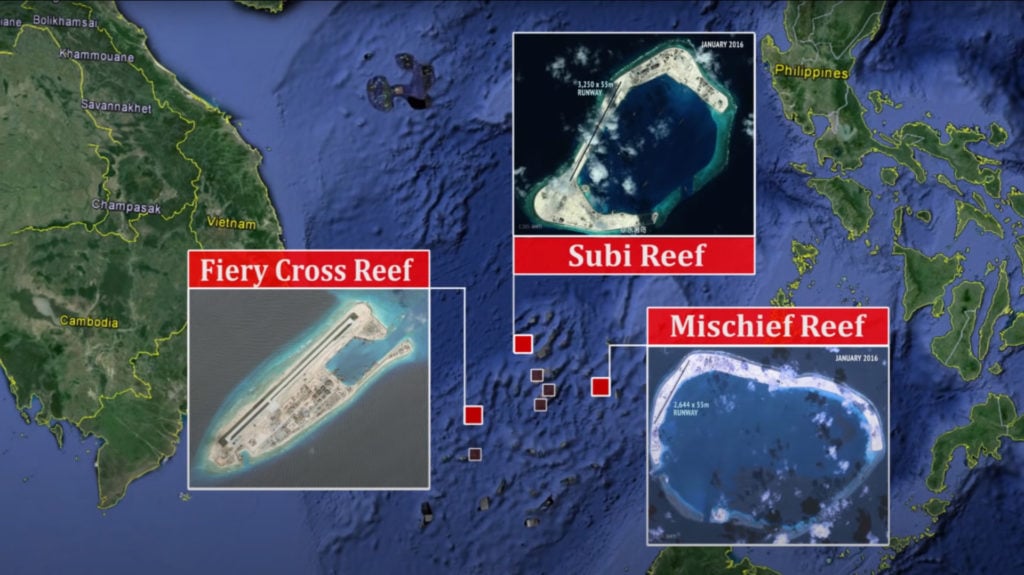
In the Chinese organization, the municipalities consist of subordinate districts and wards, with the government apparatus of each level.
So when China’s State Council created two new districts for “Sansha City,” at the same time two new district governments were created. These were the „Xisha Area“ based on Phú Lâm Island in the Paracels, and the „Nansha Area“ was located at the Fiery Cross Reef, which was invaded by China from Vietnam in 1988.
In addition to holding the „jurisdiction“ over the Paracels, the „Xisha region“ administration also manages the „Zhongsha Islands“ (Zhongsha), while the „Nansha Islands“ manages the Spratlys. Because of the party-led government, the county commission will also be present in the new districts.
The „Xisha“ and „Nansha“ help expand China’s administrative capacity in the South China Sea. The party-state has long sought to enhance governance efficiency over the claimant territories in these waters.
Beijing first established a party and government committee on Phu Lam in March 1959 (Phu Lam island was secretly occupied by China in 1956, and managed the entire island after the Battle of the Paracels in 1974), having jurisdiction like the current Sansha City.
By the end of 2008, China’s party and Phu Lam government established 18 functional administrative committees and 20 new public institutions.
When Sansha City was born in July 2012, new government organizations replaced old parts. Since 2012, Tam Sa has continuously launched new forms of local governance, including at least 4 working and management committees, as well as 10 neighborhood resident committees. Therefore, the establishment of two more districts of Xisha and Nansha is the latest step in a long-term plan of China to expand in the South China Sea.
Located at the front line of the South China Sea dispute, “Sansha City” and its affiliated administrative organizations are responsible for promoting China’s territorial interests every day. Therefore, strengthening the administrative energy for “Sansha city” will enhance China’s overall position in this tumultuous sea. Sovereignty states, especially Vietnam, need to pay close attention to „one-sided action“ in Beijing’s expansion policy.
Vietnam claimed sovereignty in both the Paracels and the Spratlys, and in 1982 established an administrative unit to manage these two groups of islands.
Hoang Sa Gallery in Danang City
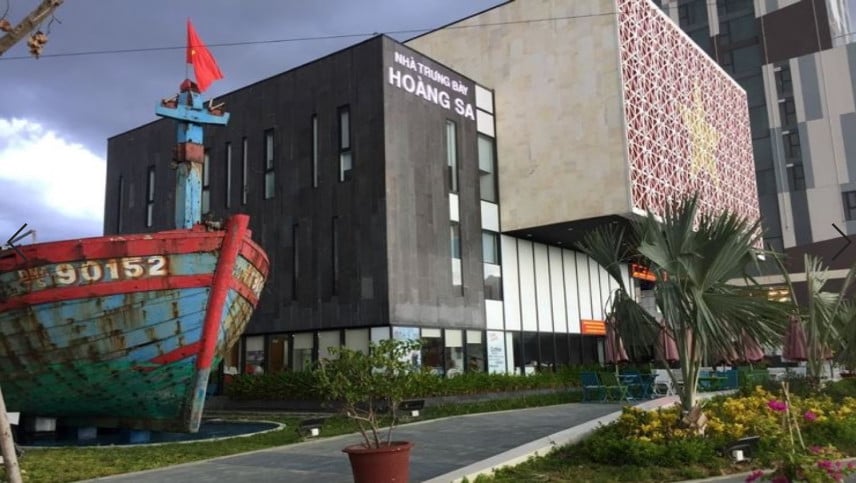
Hoang Sa island district (the Paracels) is now under Da Nang city, while Truong Sa island district (the Spratlys) belongs to Khanh Hoa province.
Phu Lam Island belongs to Hoang Sa, the location chosen by Beijing to be the capital of Xisha District, which is now claimed by China, Vietnam and Taiwan.
The Fiercy Cross reef, which Beijing now chooses to place the capital of Nansha District, is claimed by China, Vietnam, the Philippines and Taiwan.
A series of illegal Chinese actions in the South China Sea are seen as evidence that Beijing is speeding up colonization of the South China Sea while the world is worried about COVID-19 pandemic.
According to the 1982 UN Convention on the Law of the Sea, the largest convention on the law of the sea to which China is also a party, its reefs or floating structures is not an object of acquiring territory and does not have its own maritime area. The features in Spratlys, as well as Macclesfield, which China calls the „Zhongsha Islands,“ all fall into this category.
China has planned a long-term plan for Sansha and is gradually implementing this plan.
China has upgraded the „city of Sansha“ step by step from „district town“ (district city) in 2007 to „town level“ (district level city) in 2012, and now set up the „county market district.“
According to Master Hoang Viet, all these things are in the Chinese plan because they have been calculating for a long time. Since 1982, when China outlined the so-called „sea plan,“ General Liu Huaqing (the third commander of the Chinese navy) declared that China needs to own the high seas.
This plan is expressed through a three-stage naval development strategy, centered around the doctrine of „two island chains“ in the Western Pacific. The goal of the strategy is that China will have a „blue sea navy“ reaching globally by 2040.
The new developments completely coincide with what China is pursuing and bring some messages. First, as said, China shows that it never gives up its malice. Second, China also wants to try out the world’s reaction. If the world does not react strongly enough and China sees that it can continue to act, China is more likely to take further steps.
—
For more than 60 years, China has been quietly and blatantly trying to monopolize the South China Sea with many tactics.
China is advocating the use of synergy to threaten countries with maritime disputes, forcing countries to make concessions in the South China Sea issue; advocating control of reality at sea, making the world acknowledge that the South China Sea is within China’s interests and the establishment of the Xisha and Nam Sao armies under the so-called Sansha city is one important step.
Thoibao.de (Translated)


















